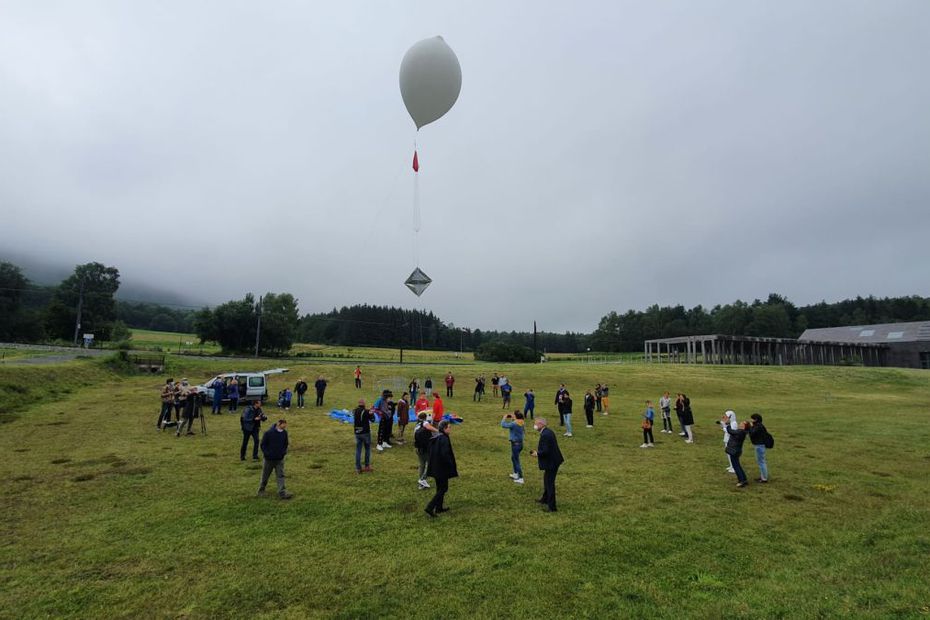
At only 17 years old, he threw a balloon into space to conduct a scientific experiment
On Friday, July 16, in Orcines, in the Puy-de-Dôme, Pierre-Loup, a 17-year-old high school student, launched a balloon into space, more specifically into the stratosphere, at an altitude of 30 km. An experiment surrounded by a team of scientists.
It is well known,”For born souls, value does not wait for the number of yearsPierre-Loup Turbert, a 17-year-old high school student, embarked on a project a year and a half ago: launching a balloon into the stratosphere! The launch took place Friday, July 16 in the morning in Orcines, at the foot of the Puy-de-Dôme, near Clermont-Ferrand.
Orcines: Android Balloon Flight 2, a project of a 17-year-old high school student who will ascend to a height of 30 km! pic.twitter.com/AMhJXJc6Ug
– Fabian Gandelhon (@fgandi) July 16, 2021
For this, he had to face many obstacles: insurance, permits from the army, from civil aviation authorities. He tells: Since I was young, I have been passionate about astronomy and space. I wanted to be able to see the space somehow. It is the most practical way I have found, to touch the beauty of space and this immensity with my finger. I created an association to be able to do this and today is the launch, it’s the end.” To form a team, he launched an appeal in the newspaper last January. The high school student asserts: “ I made an appeal in La Montagne and didn’t think it would get so big. Really, I’m glad I was able to get so many people together ».
team of scientists
He was joined by people from the “Planète Sciences” association and an astrophysicist. In addition to the budget to find, 7,000 euros, he had to overcome many obstacles. Nicolas Laporte, who works at Cambridge University explains: “ Pierre Loup started from the idea that he wanted to take a picture of the Chaîne des puys and it was necessary to respect the specifications of dozens of pages. We do not realize that in order to release a basket, there are restrictions on the weight, size and distribution of things inside. You can’t send anything into space, so it’s not easy. You have to wonder how to operate the camera, temperature sensor, pressure sensor, with a very small battery. You can’t send any battery into space. He had to lean on it for several months to find the solution. “. Add : “ As we ascend at altitude, we learn that the temperature will first decrease and at one point there is a temperature reversal: it will increase again about 15-20 km. It will detect this when it finally retrieves the data. This data may be exploitable if we repeat the experiment regularly. We can see if the altitude at which the temperature inversion occurs changes over time. It can be fun ».
Various permissions
His balloon had to be validated by CNES. It’s a 1kg Styrofoam cooler and holds photos, two playing cards, a Pokémon card, and a lock of hair from a team member. It also has a wireless transmitter, GPS and what measures pressure and temperature. His friends and Pierre Loeb are going to make a movie about their adventure. The airship will rise to a height of 35 km. You should land in Cantal 2 to 3 hours after the flight. With a GPS tracker, a high school student will be able to put his hands on the ball and analyze the scientific data. Pierre Loeb will enter his final year in September at Brive-la-Gillard. A promising future awaits him.
Continue reading on these topics

“Organizer. Social media geek. General communicator. Bacon scholar. Proud pop culture trailblazer.”
